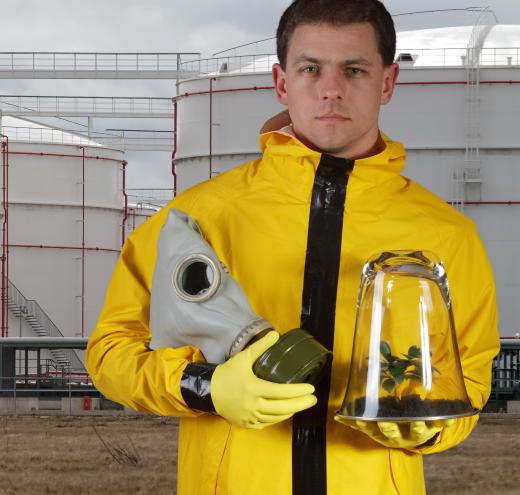What Is Cadmium Sulfide?
Cadmium sulfide (CdS) is a brightly colored semiconductor mineral often used as a yellow to yellow-orange pigment. In its natural state, when cadmium sulfide forms into a crystal, it is called Greenockite. When seen as a powdery-looking yellow mineral coating on rocks, it is called Hawleyite. A component in some types of solar cells, the mineral is most often referenced in the field of inorganic chemistry. Soluble in acid and slightly soluble in water, when cadmium reacts with acid, it turns into a toxic flammable gas.
The molecular weight of cadmium sulfide is 144.5 and it melts at 3,182 degrees Fahrenheit (1,750 degrees Celsius). Molecular weight is a measurement of the weight of a single atom of a chemical, measured in comparison with the standard weight unit of molecular mass. Industrially, thin films of cadmium sulfide are produced in order to create a type of solar cell called a cadmium telluride photovoltaic cell.

Cadmium-based solar cells are considered to be one of the less-expensive types of solar cell on the market. Use of the material is somewhat controversial because there is a reported possibility of toxic cadmium telluride exposure from the cells, especially when the cells begin to break down from wear and sun exposure. The most common material used in most solar cells is silicon.
As a pigment, this mineral has many names, including ferro lemon yellow, cadmium yellow, and aurora yellow. Cadmium yellow is well known as an eye-searingly bright yellow hue. The cadmium name is used to designate a certain color type, and not all materials labeled cadmium yellow contain cadmium sulfide as the coloring agent.
Complementary colors and adjacent colors are color references used in combination with a color wheel to determine color combinations that are aesthetically pleasing. A color wheel is essentially a spectrum of colors arranged in a circle, like a circular rainbow. For cadmium yellows, corresponding complementary colors, which are the colors on the opposite side of the color wheel, range from deep true blue tones to a blue-leaning aquamarine color. Adjacent colors, located right next to cadmium yellows on the color wheel, include orange to red-orange colors and green-tinted spring yellows.
When exposed to acid, this mineral turns into a flammable deadly gas called hydrogen sulfide. Also called "sewer gas," hydrogen sulfide gas is one of the flammable components in natural gas. It has been used as a chemical weapon in war and in a number of terrorist attacks, particularly in Japan.
AS FEATURED ON:
AS FEATURED ON:











Discussion Comments
Bright yellow is my favorite color to paint with, but I never knew where it came from. I usually use it with reds to create surreal sunsets. The shocking brightness of the yellow contrasts beautifully with the warm reds. I do a lot of surreal and abstract paintings and there's nothing like cadmium to catch the eye.
For the most part, cadmium yellow is hard to use with most colors. It's very unique. Even when I was little, I remember drawing with the "lemon" yellow crayons -- using them for the sun, because they were so bright! My mom always calls them the neon crayons.
Post your comments